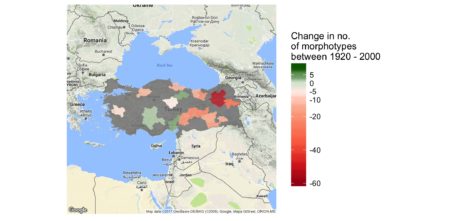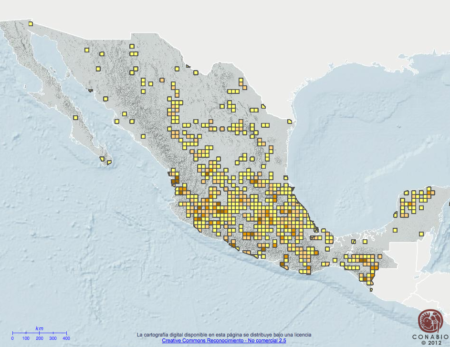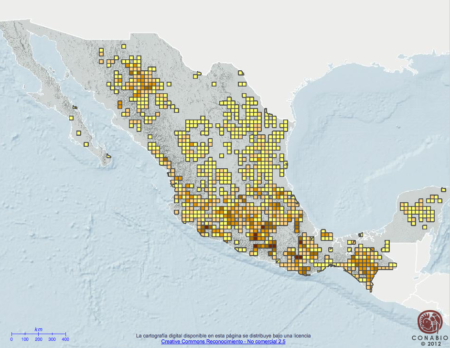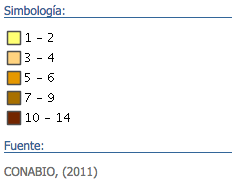![]() No sooner did I blog about a paper which mapped diversity in a crop in Mexico across time, that I came across one mapping diversity in another crop in Turkey. 1
No sooner did I blog about a paper which mapped diversity in a crop in Mexico across time, that I came across one mapping diversity in another crop in Turkey. 1
The authors — a truly international bunch from the Bahri Dagdas International Agricultural Research Institute, the Vavilov Institute, CIMMYT, ICARDA, FAO, and UC Davis — describe a huge effort to collect and describe wheat from all over the country during 2009-2014. They then compare the resulting socioeconomic and geographic patterns of diversity with a previous survey done by the Vavilov Institute in the 1920s, the results of which were published in 1935-9 by Mirza Gökgöl, a Turkish scientist who accompanied that expedition. 2
As in the Mexican maize study, diversity in the crop was measured in terms of distinct morphological types, and was unevenly distributed around the country, but unlike in that work, diversity was calculated for each administrative province, rather than in each square in a grid. As provinces vary widely in size, and in the extent to which wheat is grown in them, this approach is not ideal.
Nevertheless, it was possible to make direct comparisons between the two study periods for about 17 provinces. Discounting some very rare and very minor morphological variants, it seems fairly safe to say that for these provinces, the number of distinct wheat types went down about 59% overall, though with large differences among provinces. There is no map showing this in the paper, but, thanks to my colleague Nora Castañeda, I can help you with that. Red is down, green is up.

What explains wheat landraces still thriving in some places, and not in others?
Socioeconomic data indicated that landrace farmers are found mostly in remote mountainous subsistence communities with very little grain trade, small areas planted to wheat, and relatively simple production technologies. The key reasons famers continue to grow landraces are their grain qualities and adaptation to abiotic stresses.


 The legend used in both maps is at the left here. Looking at the maps, lots of questions came to mind. Why are we getting higher numbers of races in the 1990’s? Is it that the collecting was more thorough then? Or are races moving around more now? There is lots of information on the
The legend used in both maps is at the left here. Looking at the maps, lots of questions came to mind. Why are we getting higher numbers of races in the 1990’s? Is it that the collecting was more thorough then? Or are races moving around more now? There is lots of information on the